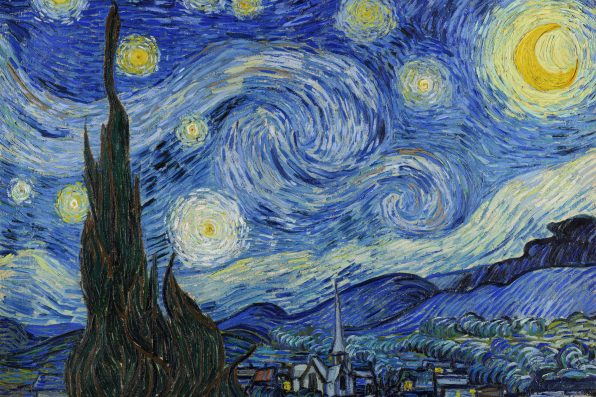If you’ve ever taken a nice long look at Vincent van Gogh’s masterpiece “The Starry Night,” you might have noticed that the painted universe almost appears to be in motion. The swirling skies seem to pulse with energy, and the bright stars dance in the night.
A team of researchers from China and France has uncovered exactly why the painting is so mesmerizing.
The artwork does not just illustrate the beauty of the night; it also captures two complex laws of physics with accuracy, which explains why it looks so magical.
“The scale of the paint strokes played a crucial role. With a high-resolution digital picture, we were able to measure precisely the typical size of the brushstrokes and compare these to the scales expected from turbulence theories,” said Yongxiang Huang, the lead author of the study.
Turbulence is a chaotic, unsteady movement of fluids like water and air. It’s what causes the swirls in your coffee when you stir the liquid, and it’s what makes airplane rides bumpy.
The researchers analyzed van Gogh’s brushstrokes. They treated the varying brightness of the paint colors like the energy of physical movement in the atmosphere when turbulence occurs.
They found that the patterns in “The Starry Night” depicted Kolmogorov’s law and Batchelor’s scaling, two important principles in fluid dynamics. Kolmogorov’s law describes how energy moves from larger to smaller scales in turbulent flows.
Picture a whirlpool: the circular currents of water get smaller as you reach the center. Some of van Gogh’s swirling patterns encapsulated the phenomenon.
On the other hand, Batchelor’s scaling describes the behavior of small-scale turbulence, explaining how substances like heat or pollutants spread in a turbulent fluid. The fine details in van Gogh’s brushstrokes align with this principle.

Sign up for Chip Chick’s newsletter and get stories like this delivered to your inbox.


